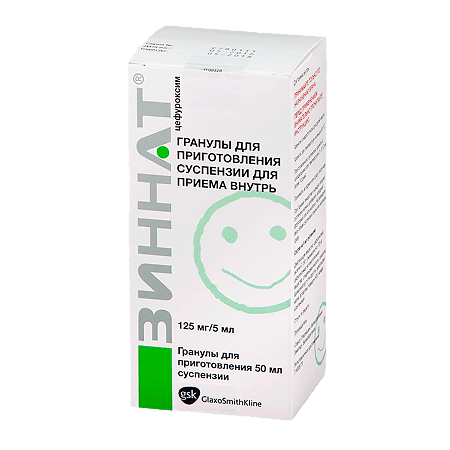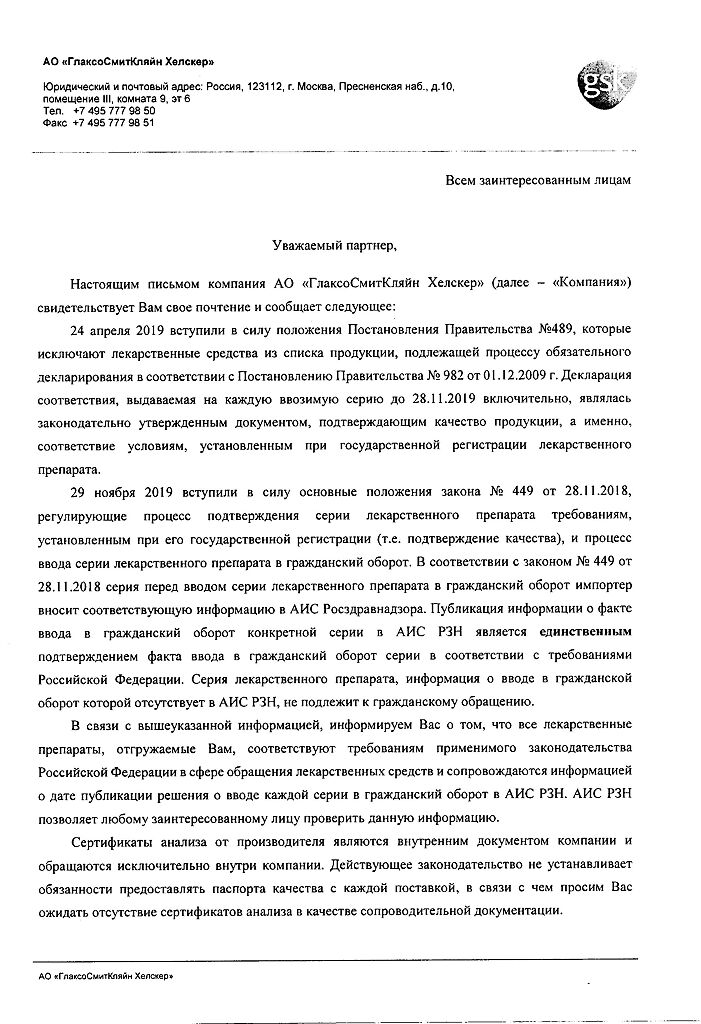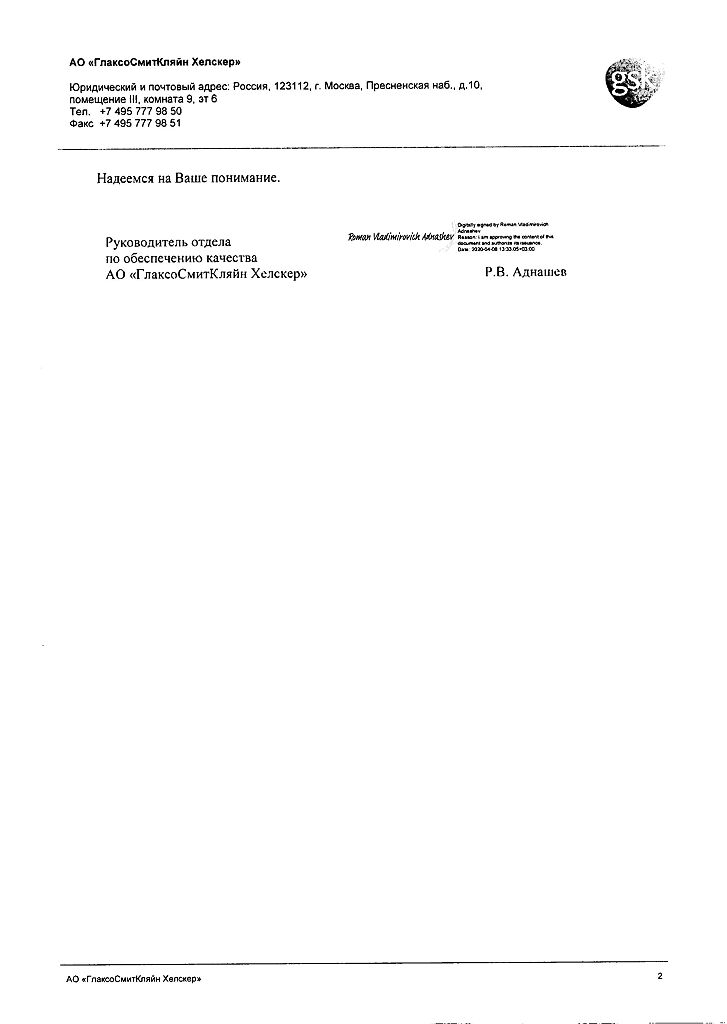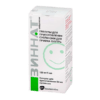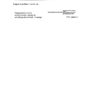No products in the cart.
Zinnate, 125 mg/5 ml
€1.00
Out of stock
(E-mail when Stock is available)
Description
Pharmacological action – broad spectrum antibacterial (bactericidal).
Pharmacodynamics
Cefuroxime axetil is a precursor of cefuroxime, which refers to cephalosporin antibiotics of II generation. Cefuroxime is active against a wide range of pathogens, including strains producing β-lactamases.
Cefuroxime is resistant to the action of bacterial β-lactamases, so it is effective against ampicillin-resistant or amoxicillin-resistant strains.
The bactericidal effect of cefuroxime is associated with suppression of bacterial cell wall synthesis as a result of binding to the main target proteins.
Cefuroxime is generally active in vitro against the following microorganisms.
Literate aerobes: Haemophilus influenzae (including ampicillin-resistant strains), Haemophilus parainfluenzae, Moraxella (Branhamella) catarrhalis, Neisseria gonorrhoeae (including penicillinase producing and non-producing strains); Escherichia coli, Klebsiella spp, Proteus mirabilis, Providencia spp.
Gram-positive aerobes: Staphylococcus aureus (including penicillinase-producing strains but excluding methicillin-resistant strains), Staphylococcus epidermidis (including penicillinase-producing strains, but excluding strains resistant to methicillin), Streptococcus pyogenes (and other beta-hemolytic streptococci), Streptococcus pneumoniae, group B streptococci (Streptococcus agalactiae).
Anaerobes: gram-positive and gram-negative cocci (including species of the genera Peptococcus spp. and Peptostreptococcus spp.), gram-positive bacilli (including species of the genus Clostridium spp, except Clostridium difficile, Propionibacterium spp.), Gram-negative bacilli (including Bacteroides spp. and species of the genus Fusobacterium spp.), Gram-negative spirochetes (including Borrelia spp.).
The following microorganisms are insensitive to cefuroxime.
Clostridium difficile, Pseudomonas spp., Campylobacter spp., Acinetobacter calcoaceticus, Listeria monocytogenes, methicillin-resistant strains of Staphylococcus aureus and Staphylococcus epidermidis, Legionella spp.
Some strains of the following genera are insensitive to cefuroxime.
Enterococcus (Streptococcus) faecalis, Morganella morganii, Proteus vulgaris, Enterobacter spp., Citrobacter spp., Serratia spp., Bacteroides fragilis.
Pharmacokinetics
After oral administration cefuroxime axetil is slowly absorbed from the GI tract and rapidly hydrolyzed in the small intestine mucosa and blood with release of cefuroxime. Cefuroxime penetrates through the BBB, the placenta and is excreted with breast milk. Cefuroxime axetil is optimally absorbed if the drug is taken immediately after meals.
In addition for film-coated tablets. Cmax of cefuroxime (2.9 mg/L for the 125 mg dose and 4.4 mg/L for the 250 mg dose) is observed in approximately 2.4 h when the drug is taken after meals.
In addition for granules for preparation of oral suspension. Cmax of cefuroxime (2-3 mg/L for 125 mg dose and 4-6 mg/L for 250 mg dose) is observed in approximately 2-3 hours when the drug is taken after meals.
Distribution
The binding to plasma proteins is approximately 33-50%.
Metabolism
Cefuroxime is not metabolized.
The T1/2 is 1-1.5 h. Cefuroxime is excreted by glomerular filtration and tubular secretion. When concomitant administration of probenecid the AUC is increased by 50%. Serum concentrations of cefuroxime decrease with dialysis.
Indications
Indications
Cefuroxime axetil is a prodrug of the oral form of the antibiotic cefuroxime with bactericidal activity against a wide range of gram-positive and gram-negative bacteria. Cefuroxime is resistant to β-lactamases.
The drug is indicated for the treatment of infectious and inflammatory diseases caused by bacteria sensitive to cefuroxime:
infections of the upper respiratory tract, ENT organs, such as otitis media, sinusitis, tonsillitis and pharyngitis;
lower respiratory tract infections, such as pneumonia, acute bacterial bronchitis and exacerbation of chronic bronchitis;
urinary tract infections such as pyelonephritis, cystitis and urethritis;
infections of the skin and soft tissues, such as furunculosis, pyoderma and impetigo;
gonorrhea: acute uncomplicated gonorrheal urethritis and cervicitis;
treatment of borreliosis (Lyme disease) in the early stages and prevention of late stages of this disease in adults and children over 12 years of age.
Cefuroxime is also available as a sodium salt (Zinacef®) for parenteral administration. As part of stepwise therapy, it is recommended to switch from the parenteral form to the oral form of cefuroxime. Stepped therapy is indicated in the treatment of pneumonia and exacerbation of chronic bronchitis.
Pharmacological effect
Pharmacological effect
Pharmacological action – broad spectrum antibacterial (bactericidal).
Pharmacodynamics
Cefuroxime axetil is a precursor to cefuroxime, which is a second generation cephalosporin antibiotic. Cefuroxime is active against a wide range of pathogens, including strains that produce β-lactamases.
Cefuroxime is resistant to bacterial β-lactamases and is therefore effective against ampicillin-resistant or amoxicillin-resistant strains.
The bactericidal effect of cefuroxime is associated with the suppression of bacterial cell wall synthesis as a result of binding to the main target proteins.
Cefuroxime is generally active in vitro against the following microorganisms.
Gram-negative aerobes: Haemophilus influenzae (including ampicillin-resistant strains), Haemophilus parainfluenzae, Moraxella (Branhamella) catarrhalis, Neisseria gonorrhoeae (including strains that produce and do not produce penicillinase); Escherichia coli, Klebsiella spp., Proteus mirabilis, Providencia spp.
Gram-positive aerobes: Staphylococcus aureus (including penicillinase-producing strains, but excluding methicillin-resistant strains), Staphylococcus epidermidis (including penicillinase-producing strains, but excluding methicillin-resistant strains), Streptococcus pyogenes (and other beta-hemolytic streptococci), Streptococcus pneumoniae, group B streptococci (Streptococcus agalactiae).
Anaerobes: gram-positive and gram-negative cocci (including species of the genera Peptococcus spp. and Peptostreptococcus spp.), gram-positive rods (including species of the genus Clostridium spp., except Clostridium difficile, Propionibacterium spp.), gram-negative rods (including Bacteroides spp. and species of the genus Fusobacterium spp.), gram-negative spirochetes (including Borrelia spp.).
The following microorganisms are insensitive to cefuroxime.
Clostridium difficile, Pseudomonas spp., Campylobacter spp., Acinetobacter calcoaceticus, Listeria monocytogenes, methicillin-resistant strains of Staphylococcus aureus and Staphylococcus epidermidis, Legionella spp.
Some strains of the following genera are insensitive to cefuroxime.
Enterococcus (Streptococcus) faecalis, Morganella morganii, Proteus vulgaris, Enterobacter spp., Citrobacter spp., Serratia spp., Bacteroides fragilis.
Pharmacokinetics
Suction
After oral administration of cefuroxime, axetil is slowly absorbed from the gastrointestinal tract and rapidly hydrolyzed in the mucous membrane of the small intestine and blood to release cefuroxime. Cefuroxime penetrates the blood-brain barrier, the placenta and is excreted in breast milk. Cefuroxime axetil is optimally absorbed when taken immediately after meals.
Additionally for film-coated tablets. Cmax of cefuroxime (2.9 mg/l for a dose of 125 mg and 4.4 mg/l for a dose of 250 mg) are observed after approximately 2.4 hours when taking the drug after meals.
Additionally for granules for the preparation of suspension for oral administration. Cmax of cefuroxime (2-3 mg/l for a dose of 125 mg and 4-6 mg/l for a dose of 250 mg) are observed after approximately 2-3 hours when taking the drug after meals.
Distribution
The binding to plasma proteins is approximately 33–50%.
Metabolism
Cefuroxime is not metabolized.
Removal
T1/2 is 1–1.5 hours. Cefuroxime is excreted by glomerular filtration and tubular secretion. With simultaneous administration of probenecid, the AUC increases by 50%. Serum concentrations of cefuroxime decrease with dialysis.
Special instructions
Special instructions
Caution should be exercised when prescribing the drug to patients with a history of an allergic reaction to beta-lactam antibiotics.
During treatment, it is necessary to monitor renal function, especially in patients receiving the drug in high doses.
During the period of taking Zinnat®, a false positive urine reaction to glucose is possible.
As with other antibiotics, long-term use of Zinnat® can lead to overgrowth of Candida fungi. Long-term use may cause the growth of other resistant microorganisms (Enterococci and Clostridium difficile), which may require discontinuation of treatment.
Pseudomembranous colitis has been observed with the use of broad-spectrum antibiotics, and a differential diagnosis of pseudomembranous colitis should be made in patients with severe diarrhea that occurs during or after a course of antibiotic treatment.
The Jarisch-Herxheimer reaction was observed in borreliosis (Lyme disease) when taking the drug Zinnat® and is due to the bactericidal activity of the drug against the causative agent of the disease, the spirochete Borrelia burgdorferi. Patients should be informed that these symptoms are a typical consequence of antibiotic use for this disease.
If the clinical effect is not achieved within 72 hours from the start of treatment, the parenteral course of therapy should be continued.
Before starting step therapy, information regarding cefuroxime sodium salt (Zinacef®) should be obtained from reference books.
Zinnat® tablets should not be broken or crushed. Therefore, this dosage form is not used to treat patients with swallowing difficulties, incl. small children who cannot swallow a whole tablet.
Granules for the preparation of suspension for oral administration. The sucrose content in the Zinnat® suspension should be taken into account when treating patients with diabetes mellitus.
5 ml of the prepared Zinnat® suspension contains 0.25 XE.
Impact on the ability to drive vehicles and operate machinery. Since cefuroxime axetil may cause dizziness, patients should be warned to take precautions when driving or operating moving machinery.
Active ingredient
Active ingredient
Cefuroxime
Composition
Composition
5 ml contains cefuroxime 125 mg;
excipients:
stearic acid,
sucrose,
acesulfame potassium,
aspartame,
povidone K30,
xanthan gum,
purified water,
tutti frutti flavoring
Pregnancy
Pregnancy
Zinnat® should be used if the potential benefit to the mother outweighs the potential risk to the child.
There is no experimental evidence of embryopathic or teratogenic effects of cefuroxime axetil, but as with other drugs, caution must be exercised when prescribing it in early pregnancy.
Caution must be exercised when prescribing it to nursing mothers, since the drug is detected in breast milk.
Contraindications
Contraindications
– hypersensitivity to β-lactam antibiotics (in particular, a history of cephalosporin antibiotics, penicillins and carbapenems).
– hypersensitivity to aspartame;
– phenylketonuria;
– children’s age up to 3 months.
With caution: renal dysfunction; gastrointestinal diseases (including a history of ulcerative colitis); pregnant women; lactation period.
Side Effects
Side Effects
Adverse reactions when using cefuroxime axetil are usually mild, short-term and reversible.
The adverse events presented below are listed depending on the anatomical and physiological classification and frequency of occurrence. The frequency of occurrence is determined as follows: very often – ≥1/10; often – ≥1/100 and <1/10; uncommon - ≥1/1000 and <1/100; rarely - ≥1/10000 and <1/1000; very rarely - <1/10000, including isolated cases. Frequency categories were formed based on clinical studies of the drug and post-registration surveillance.
Infections: often – superinfection with fungi of the genus Candida.
From the hematopoietic and lymphatic systems: often – eosinophilia; uncommon – false-positive Coombs test, thrombocytopenia, leukopenia (sometimes severe); very rarely – hemolytic anemia. Cephalosporins are absorbed on the surface of the cell membrane of red blood cells, binding to antibodies to cephalosporins, which leads to a false-positive Coombs test result and, in very rare cases, hemolytic anemia.
From the immune system: hypersensitivity reactions, including: infrequently – skin rash; rarely – urticaria, itching; very rarely – drug fever, serum sickness, anaphylaxis.
From the nervous system: often – headache, dizziness.
From the gastrointestinal tract: often – gastrointestinal disorders, including diarrhea, nausea, abdominal pain; infrequently – vomiting; rarely – pseudomembranous colitis.
From the liver and biliary tract: often – transient increase in the activity of liver enzymes (ALT, AST, LDH); very rarely – jaundice (mainly cholestatic), hepatitis.
From the skin and subcutaneous fat: very rarely – erythema multiforme, Stevens-Johnson syndrome, toxic epidermal necrolysis.
Interaction
Interaction
Drugs that reduce gastric acidity may reduce the bioavailability of cefuroxime when compared with that observed after taking the drug on an empty stomach, and also neutralize the effect of increased absorption of the drug after meals.
Like other antibiotics, Zinnat® can affect the intestinal microflora, which leads to a decrease in the reabsorption of estrogens and, as a result, a decrease in the effectiveness of oral hormonal combined contraceptives.
When performing a ferrocyanide test, a false negative result may be observed, therefore, it is recommended to use glucose oxidase or hexokinase methods to determine blood and/or plasma glucose levels.
The drug Zinnat® does not affect the quantitative determination of creatinine by the alkaline picrate method.
Concomitant use with loop diuretics slows down tubular secretion, reduces renal clearance, increases plasma concentrations and increases T1/2 of cefuroxime.
When taken simultaneously with aminoglycosides and diuretics, the risk of nephrotoxic effects increases.
Overdose
Overdose
Symptoms: increased excitability of the brain with the development of seizures.
Treatment: symptomatic. Serum concentrations of cefuroxime are reduced during hemodialysis and peritoneal dialysis.
Storage conditions
Storage conditions
Store at room temperature out of the reach of children.
Shelf life
Shelf life
3 years
Manufacturer
Manufacturer
Glaxo Operations UK Ltd, UK
Additional information
| Shelf life | 3 years |
|---|---|
| Conditions of storage | Store at room temperature out of the reach of children. |
| Manufacturer | Glaxo Operations UK Ltd, United Kingdom |
| Medication form | granules for preparation of oral suspension |
| Brand | Glaxo Operations UK Ltd |
Related products
Buy Zinnate, 125 mg/5 ml with delivery to USA, UK, Europe and over 120 other countries.

